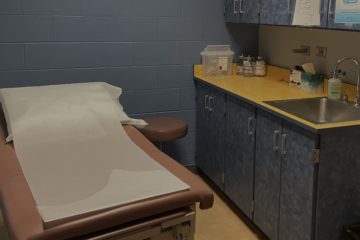As a 17-year-old who grew up in West Virginia, I often think about where I live and what I see around me. On one hand, I’ve seen supportive community and love and growth – but I’ve also seen isolation and struggle and stasis — and the effects it has on us. In 2021, being a young person in West Virginia comes with a distinct set of challenges, including poverty, housing insecurity, and now the COVID-19 pandemic, which put a strain on our mental health and our ability to grow into healthy adults. In fact, 30% of WV children struggled with an emotional, behavioral, or developmental mental disorder in 2019, and the percentage has been increasing each year. As hopelessness, anxiety, and other struggles become more and more prevalent, I find myself racking my brain on how we can best help each other. Is mindfulness meditation the answer? More research? Calling our legislators? Increasing public school funding? Following this question has led me to the WV Prevention Research Center, where I’ve been working on research on youth mental health. But the more I’ve tried to simplify the question of youth mental health in WV, the more complex I’ve realized it is.
No matter how much I love my state, it’s clear that the high levels of poverty, substance abuse, and food insecurity in West Virginia are having a profound impact on the mental health of its youth. During childhood and adolescence, it’s critical that our developing brains are surrounded by the support and engagement they need. But all too often, our brains are met with instability and isolation instead. For example, in 2019, two percent of children in WV were in foster care, compared to less than one percent of children in the United States as a whole. Just as recently, 22% of WV children lived in households that were food insecure, compared to 16% of children in the US as a whole. Not knowing whether to expect food on the table or a safe home to come back to creates a continuous presence of physical and mental stress. Research repeatedly shows that this “toxic stress” elevates levels of the stress hormone cortisol, which can lead to lifelong impairments of learning, behavior, and mental health (Franke, 2014). On the flip side, a healthy and stable childhood strongly predicts lifelong health.
Although I’m so lucky to have never experienced household insecurity, I’ve seen the enormous strain it puts on everyone in the family. We can’t blame adults for failing to support their children. For adults, insecurity and poverty and everything, it comes with often puts their brains in a constant state of “fight or flight.” Constant thoughts of finding the next meal or paying the next bill are all-consuming of mental resources. The resulting mental fatigue makes it so hard to make long-term plans, maintain hope, and provide the support and warmth children need.
What if we all came together to help these families? To help relieve the immense load of stress they are under, freeing more energy for love and support? So many people and programs, such as Think Kids and Pantry Plus More, are already doing that. Whether it be through increasing communication between schools and public health departments, or making food pantries more accessible, these steps make me smile.
It seems clear to me that helping families feel stable and supported, through various programs, is at the root of strengthening the mental health of their kids. But then I also find myself asking: what if while developing broad, long-term initiatives, we also focused on bringing out each other’s individual strengths? Joining Forces for Children identifies Seven Cs for resilience: Competence, Confidence, Connection, Character, Contribution, Coping, and Control. What if we helped each other develop resilience through these Seven Cs?
One way to strengthen multiple of these Cs is through mindfulness. Mindfulness, or the practice of paying full attention to the present moment, helps slow down and reset our minds. It develops our ability to choose how we respond to stressful and unfortunate situations, instead of simply reacting. This strengthens our sense of control, which is especially important in the face of the instability that many of us face. Research has repeatedly demonstrated its ability to help us regulate stress, which is more and more important today. Whenever I feel stressed, or panicked, or hopeless, mindfulness often helps calm my nervous system. But my experience also tells me that these personal practices are only one small piece of a large puzzle.
While individual practices such as mindfulness benefit children and families, often additional support from professionals is invaluable in developing resilience and improving mental health. We often tell each other, “ask someone for help if you’re struggling”, or “reach out to a mental health professional” – for good reason. But what happens if mental health professionals are in short supply, like in most of West Virginia? On average, there are 730 people for every mental health provider in WV; in some counties, that number is as high as 8,450 (County Health Rankings). Even when families seek treatment, they run into long wait times, limited options, and unfeasible costs. In fact, a 2018 study showed that lack of access is a root cause of our mental health crisis. We need to ensure that access is not a barrier for West Virginia’s children. Not only do we need more mental health providers in our state, we also need to make it easier to access the providers we do have. Through increasing awareness of our treatment options and communication between departments, we can make it easier to tap into the inner strength that all children, that all of us, have. In turn, as each of us heal individually, our communities will only grow stronger.
I come back to the relationship between social conditions and individual strength. Is it more important to focus on one or the other? Does focusing on social conditions obscure our own power to improve our mental health? Does focusing on individual power obscure the social conditions at the root of many struggles? How do we improve our social conditions, and how do we tap into our individual strength? Both sides of youth mental health, the social and the individual, are intimately intertwined. All the factors that affect our mental health don’t fit into a textbook – let alone a blog post. But what’s clear is how important it is that people from all perspectives come together to work on this multifaceted issue. The social workers, the legislators, the volunteers, the teachers, the scientists… and the kids themselves. And to the inspiring progress, understanding, and commitment I see every day, I hope to add a tiny piece.
—
Elena Kurov is a Senior at Morgantown High School and a youth researcher at the West Virginia Prevention Research Center. Elena is passionate about improving and better understanding youth mental health. In her free time, she enjoys rock climbing and teaching others to climb at her local gym.



0 Comments